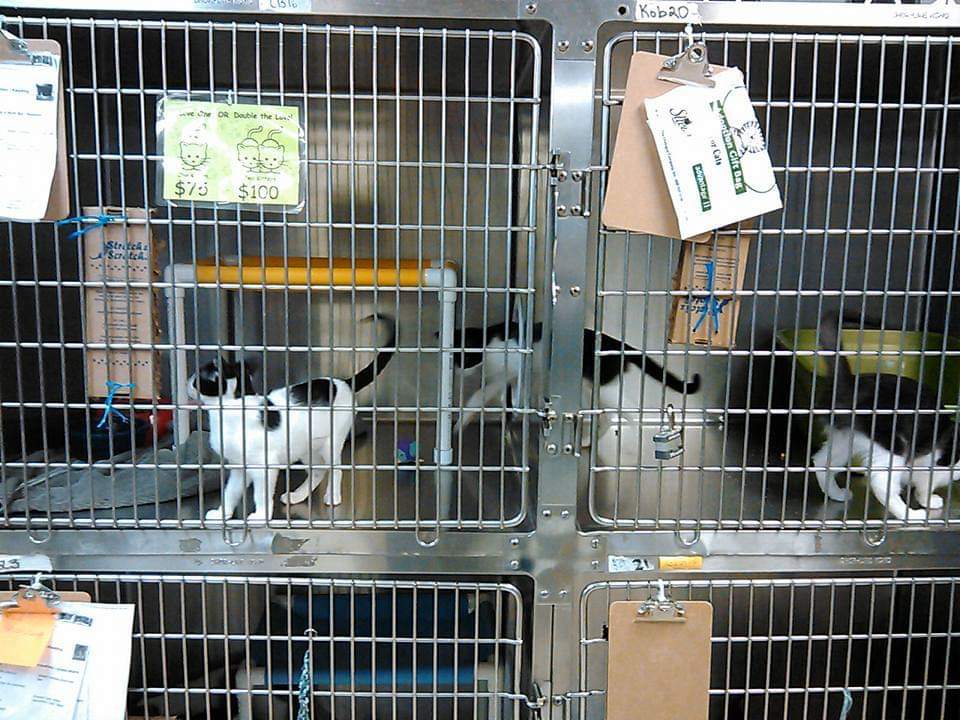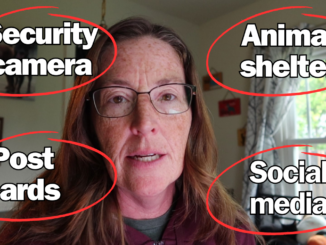
Cats go missing every day, and many are never found. You can greatly increase your chances of finding your lost cat quickly by utilizing these effective search techniques.
Take action immediately
As in a missing person case, fast action most often leads to success. The more time passes, the further your cat can get from home, and the more things that may happen to him. Don’t hope for the best or wait for him to come home — take action today.
Step 1: Physical search
Most lost cats are recovered quickly by a physical search. This may seem obvious and you may say you’ve already done that, but wait … there a lot more to it than walking around calling your cat’s name and shaking a bag of treats. Your search must be strategic and thorough.
Before we get into details I would like to stress safety first! Panicked missing pet owners may do things that put them in danger because they aren’t thinking rationally. Don’t trespass, don’t walk on busy roads or freeways, don’t search alone in isolated areas. Take a companion with you, especially when searching after dark, and have your phone close at hand in case of emergency.
When starting your search, the first question to ask is how did your cat go missing? Is he an indoor only cat who just disappeared? Did you see him dart out the door or window? Is he an outdoor cat who just didn’t come home one night? Did he escape from his carrier in the parking lot at the vet hospital? Each of these scenarios will necessitate a different search.
Indoor cat
If your cat is indoors only and has gone missing, are you absolutely sure he got out? Often when I assist folks in missing cat cases, they say they can’t find their indoor cat and they attribute the disappearance to a door or window being left open, although no one saw him get out. In this case, the first place to search is your house. Exhaustively. The old saying “Curiosity killed the cat” is unfortunately true, and cats can get themselves into some bizarre and sticky situations. Over the years I have heard of cats getting stuck in walls, ceilings, crawl spaces, furniture, and even a piano!

Search all the obvious places like under the bed, in cupboards, and in closets. Now go deeper, searching in any possible space a cat could squeeze his slinky body. Are there any holes in your walls, like a missing electric socket? Do you have forced air heating with vents in the floor? Favorite way for cats to disappear! Look even in places that seem ridiculous, like inside furniture, especially sofa beds and recliners, and inside the washer and dryer. Leave no stone unturned.
Outdoor cat
If your cat is normally indoors only and has gotten outside, he will likely not go far, especially in the first day or two. Search all around your house including trees, bushes, and any other possible hiding place. All cats like to hide, and indoor cats will be especially insecure outside so will most likely stay out of sight.

After searching all the areas out in the open, check any shed, garage, or outbuilding. It is not uncommon for cats to explore or hide inside a structure when it is open, only to become trapped when the person closes and locks the door. This sometimes happens on weekends when folks are working on cars or in the garden, then they close up the building for the rest of the week. Also check any vehicles on the property. My friend’s cat climbed into their car while her husband was unloading some items. He didn’t see this happen, so closed and locked the car door. Fortunately my friend noticed quickly that her kitty was missing and found her, as it was in the middle of a hot summer!
If you don’t find your kitty on your own property, move to the closest neighbors. Search where you can from your own home or from the public street, and of course ask permission to go on the neighbor’s property to conduct a physical search. This is often successful, so swallow your hesitation to talk to neighbors and knock on the door.
If your cat has outdoor access all the time, he will likely have a larger territory that he travels on a daily basis. Start your search close to home then expand outwards. Do you know where he goes during the day? Does he visit others, or eat food left outside for community cats? How far you search will depend on where you live. In the country, properties tend to be much larger and spread out, while in the city people live much closer together. Try to think like a cat and search in any place that seems appealing for hiding, eating, sleeping, or visiting with other people and cats.
Personality
Your cat’s personality will affect what he does when missing. In general, a shy cat is more likely to stay out of sight, avoid people, and not come when called, while a more outgoing cat is more likely to approach people and remain visible. That said, any cat can hide, or be stuck somewhere and not respond vocally when you are searching. This behavior can be caused by fear of the unknown, or by the trauma of something that has happened, like being chased by a dog. Stay tuned for more detailed articles and videos on cat personalities.
Age and health
Age and health play a big part in your cat’s behavior when missing. In my shelter work I saw many elderly cats (and dogs for that matter) become lost and confused even quite close to home. They may be physically weak or experience a medical event like a seizure and find themselves unable to get up and walk back home.

They may be intimidated by younger, more aggressive cats who chase them away from home and prevent them from returning. They may have a feline form of dementia and simply get lost, even in a once-familiar area. Be sure to leave no stone unturned when searching for such a kitty. They could be right next to you and unable to respond.
Old and ill cats should be kept indoors, or at least confined to your yard close to home.
Step 2: Check the shelter
Although most cats are found close to home or in a nearby neighborhood, you must still check any shelter that provides animal control for your area. Don’t delay on this step, as hold periods can be very short! In California, for example, the minimum hold period is just 72 hours. After 72 hours, your cat could be adopted, transferred to a rescue group, or even put to sleep.
Jurisdiction
You may have never been to a shelter before, and have no idea how to navigate the complex jurisdictional system. The best way to start is to call your local law enforcement. Police, sheriff, etc. usually work in cooperation with animal control and should know where to direct you. Sometimes police provide animal control services, especially in a small town. You can also start your search on Google by typing in “animal shelter near me.”
Especially now in the “new reality” of covid, be sure to call the shelter first to determine their hours of business and procedures. I have found that what is stated on a business’ website or Google listing is often not accurate, especially with the ever-changing restrictions. Many shelters are making appointments, only allowing a few people in at a time, and of course requiring masks.
Be thorough
When you go to the shelter, check in at the front desk to report your cat missing. Don’t just look at the cats you see in the lobby cages. Many people make this mistake, not realizing these are only the animals up for adoption. There are many more in other areas not immediately visible to the public.

After viewing the cats taken in at that shelter, ask if there are any other places you may check. Sometimes humane societies or rescue groups will take in found cats. Veterinarians will sometimes take in and treat ill or injured found animals and hold them at the hospital in hopes of finding an owner. Check the shelter in person as often as you can, and also check the listings of found pets online. Check back regularly. Don’t rely on your lost cat report or on the microchip. Maybe someone at the shelter will call you, but more likely they will not.
Step 3: Alert neighbors
The more eyes you have on your search, the better. If you don’t find your cat right away by searching around your home (or other location where he went missing) and at the shelter, you will want to involve your neighbors.
Door to door
Especially in today’s world, knocking on doors is not something we like to do. However, it can prove very effective. When you go door to door, bring flyers to hand out. If the person answers, ask if they have seen your cat. Give them a flyer and encourage them to call or text with any leads. If they aren’t home or don’t want to open the door, leave the flyer on the porch under the mat, a plant pot, or someplace else where they will see it. Don’t put flyers in mailboxes without postage, as this can get you into trouble with the post office. Check out this article and video for full details on making and distributing posters, flyers, and mailers.

Posters
Make and hang posters that are bright and easy to see and read around the area where your kitty went missing. Be sure to include high traffic areas like intersections into and out of your neighborhood, the grocery store, or anyplace else that will get a lot of attention. Be aware of any local laws regarding signs and follow them. You don’t want to go through the trouble of making and putting up posters only to have them taken down the next day, or to be slapped with a fine.
Follow up
Follow up on any leads. If you get reported sightings, you may want to use a security camera to verify it is indeed your cat. If you are sure of your cat’s location but he is hiding or won’t come to you, you may want to use a humane trap to get him safely confined. Don’t get discouraged. Lost cats are found by owners who actively and effectively search. Don’t give up and you will soon bring your kitty home!




